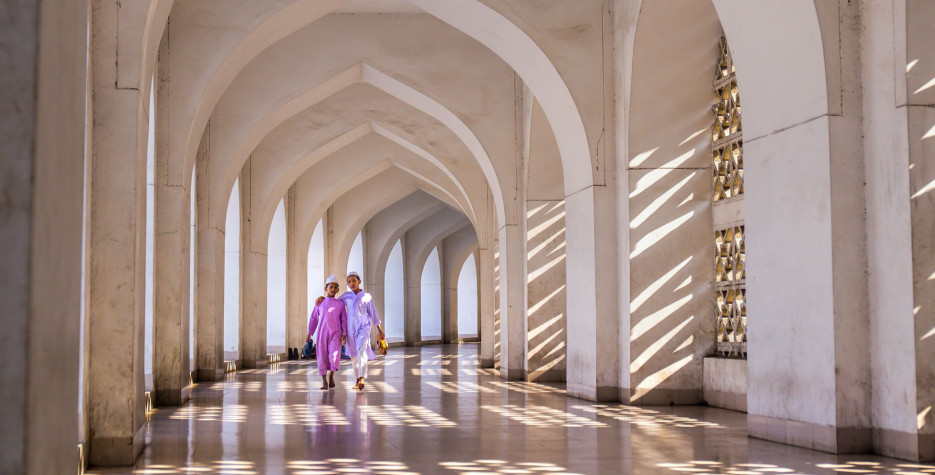When is Jumatul Bidah?
Jumatul Bidah is celebrated on the last Friday in the Islamic month* of Ramadan. It is a public holiday in Bangladesh and a regional holiday in the Indian states of Jammu and Kashmir and Uttarakhand, where it is known as 'Jumat-ul-Wida'.
Traditions of Jumatul Bidah
Jumatul Bidah translates as 'Friday of farewell' and marks the last Friday prayers in the holy month of Ramadan. Some Muslims regard this day as the second holiest of Ramadan and spend a large part of the day in worship.
In Bangladesh, large numbers will attend prayers and the largest takes place at the National Mosque of Bangladesh in Dhaka known as Baitul Mokarram Mosque.
Baitul Mukarram Mosque is located in the center of Dhaka, capital of Bangladesh. The mosque was completed in 1968 and has a capacity of 30,000, making it the 10th biggest mosque in the world. Despite this huge capacity, the mosque has to be extended during the month of Ramadan to accomodate another 10,000 worshippers.
The Islamic Calendar
*The Islamic calendar is based on the moon (Lunar) , while the solar calendar is based on the sun (Solar). The solar calendar months are made of 30 or 31 days except for February. The Lunar calendar months are made of 29 or 30 days. Ramadan can therefore last for either 29 days or 30 days.)
The start and end of the month is based on a combination of physical sightings of the moon and astronomical calculations. The practice varies from place to place, some places relying heavily on sighting reports and others totally on calculations. In the United States, most communities follow the decision of the Islamic Society of North America, which accepts bonafide sightings of the new moon anywhere in the United States as determining the start and end of the month.


